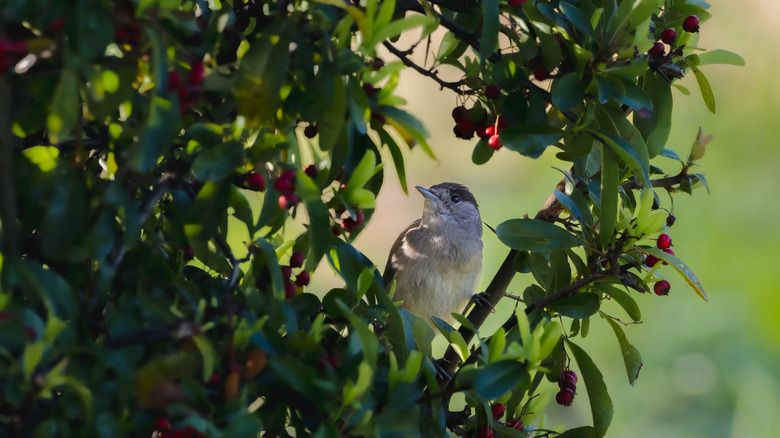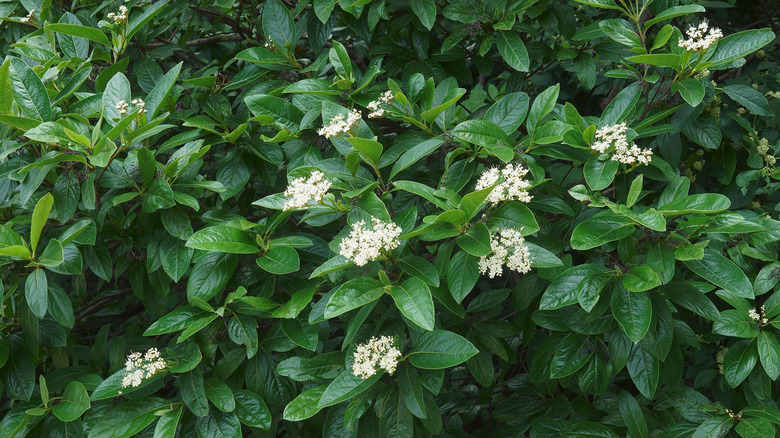A Variety Of Birds Will Enjoy Visiting This Gorgeous Native Shrub In Your Garden
When growing a wildlife garden to attract birds, pollinators, and other wildlife to your yard, you'll want to make sure you have good shrub options for different growing conditions — some for that hot spot in full sun in the front yard, and others for that damp area near the creek in the back. Possumhaw viburnum (Viburnum nudum) — not to be confused with possumhaw holly (Ilex decidua) — is perfect for damp soil, and it's a shrub that will attract birds to your yard for fun feathered sightings.
Native to the southern and eastern US, from Texas to New York state, this shrub, also called smooth witherod, it produces gorgeous clusters of fragrant, showy, white flowers from spring through summer. It has smooth and somewhat shiny foliage, but as a landscaping plant, what it is best known for is its eye-catching fall color.
Native plants are perfect for bringing birds to your yard, and this US native shrub provides both shelter and food for birds, attracting cardinals, robins, northern flickers, cedar waxwings and eastern bluebirds, among others. The flowers of these shrubs also draw in hummingbirds during its blooming season. They're even a hit with butterflies and moths, as these plants can provide both food and shelter.
How to grow possumhaw viburnum in your yard to attract birds
If this sounds like the perfect shrub to add to your garden to indulge your bird watching fancies, you'll want to know if your growing conditions are a good match. Possumhaw viburnum grows in USDA Hardiness Zones 5 to 9 and prefers moist or wet, acidic soil. It can grow in shade, part shade, or full sun, and needs room to sprawl, as it can reach 12 to 20 feet tall and wide.
When growing this plant to attract birds to the garden, place it in a location where you'll have an easy time observing feathered visitors from your preferred location, whether this means from a kitchen window or a back patio. Wherever you decide to plant it, smooth witherod can be grown as an alternative for invasive burning bush for fall color, or as a substitute for invasive privet when grown for berries. Grow more than one plant for better fruit production — that's what the birds want, after all — and consider including this shrub in a hedgerow or using it as a foundation planting if the soil and light conditions are right.

